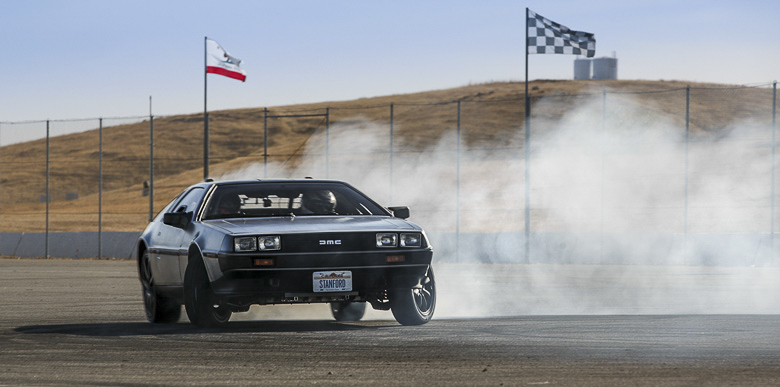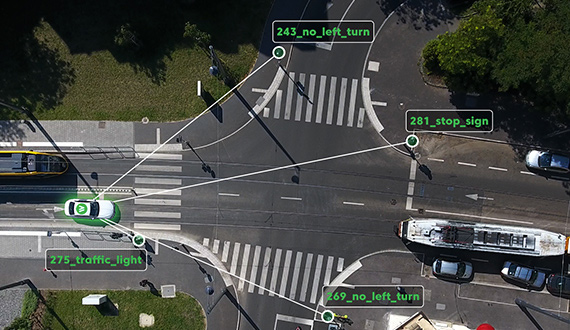
“Roads? Where we’re going, we don’t need roads,” Dr. Emmett Brown famously said in the hit movie “Back to the Future.” Doc was wrong about that, though. Today you still need roads, but perhaps what we don’t need are drivers.
Today is Back to the Future Day, the day on which Marty McFly and Doc Brown travel to the future in the sequel to the original film. To honor the movie and the date, Stanford engineers have built a self-driving, electric, drifting DeLorean.
“The sublime awesomeness of riding in a DeLorean that does perfect, smoke-filled doughnuts by itself is a mind-bending experience that helps you appreciate that we really are living in the future,” said Jonathan Goh, a mechanical engineering graduate student at Stanford.
(Related: Apple’s non-time-traveling self-driving car)
The researchers nicknamed the car MARTY, which doubles as an homage to the character Marty McFly, and also stands for Multiple Actuator Research Test bed for Yaw control. It is the brainchild of Chris Gerdes, a professor of mechanical engineering at Stanford, who decided to take a vintage 1981 DeLorean and transform it into an autonomous vehicle. Renovo Motors, an automotive startup based in Silicon Valley, helped make that idea become reality.
In addition to creating something that greatly honors the movie, MARTY is designed to see how autonomous vehicles handle extreme situations such as drifting at large angles.
“We want to design automated vehicles that can take any action necessary to avoid an accident,” Gerdes said. “The laws of physics will limit what the car can do, but we think the software should be capable of any possible maneuver within those limits. MARTY is another step in this direction, thanks to the passion and hard work of our students. Stanford builds great research by building great researchers.”
One of the goals Gerdes has for MARTY is to use it to drift alongside other cars operated by professional drivers. According to him, this is a common technique in motorsport competitions, where drivers have to anticipate each other’s movements.
Like it or not, self-driving cars are clearly in our future.






